 
|
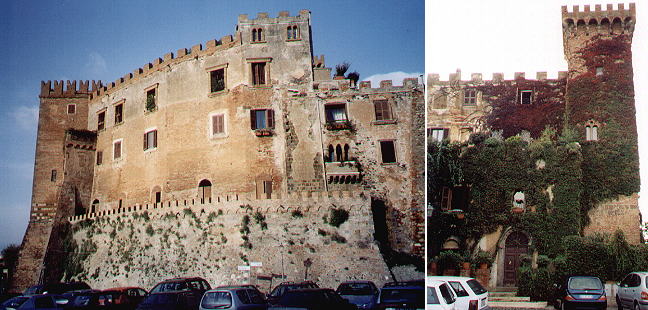 | ||
The road leading to the town is dominated by the mass of Castello Guglielmi, a medieval castle built by the Orsini, perhaps too much restored in the XIXth century by the Guglielmi, a rich family of Civitavecchia, owner of most of the land around Montalto.
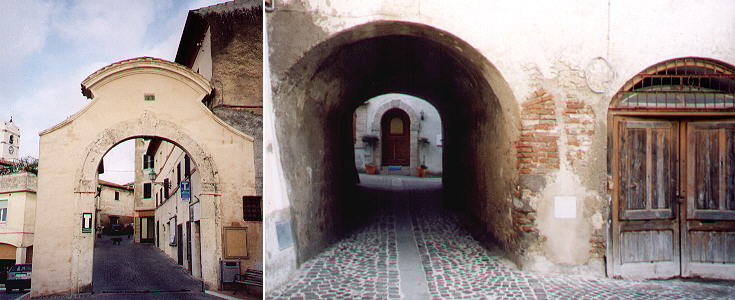 | ||
There are still only two entrances to old Montalto, the streets of which maintain the atmosphere of the past.
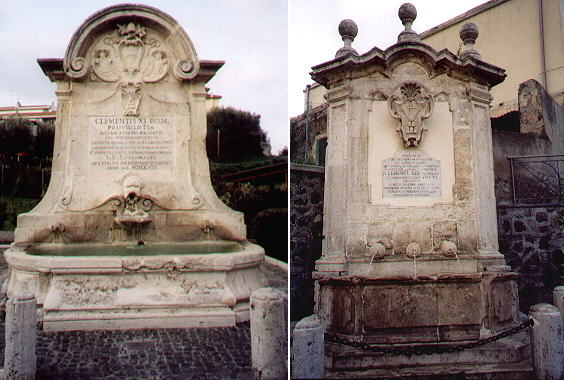 | ||
According to an old saying: "Dell'Italia il Papa ha la ciccia e il Granduca l'ossa" (the Pope has the meat of Italy and the Grand Duke - of Tuscany - only the bones): it meant that the land of the Papal State was by far more fertile than that of Tuscany (which had many more mountains). But in the XVIIIth century the saying was no longer true. Towards the end of the XVIth century the Grand Dukes of Tuscany realized that the fortunes of their family (the Medici) could no longer rely on trade and banking because the discovery of America and the new large European states had changed the economic elements which had supported the growth of Italy until the end of the XVth century. They therefore turned their attention to agriculture and through various means they developed it. Their villas are decorated with frescoes and oil paintings showing the apples, the peaches, the pumpkins which grew on their farms. This continued effort made Tuscany a very well cultivated land. Even unhealthy Maremma was in part reclaimed by digging channels which drained the marshes. Travellers were struck by the change they noticed in the fields when they passed the border between Tuscany and the Papal State.
In the XVIIIth century the popes tried to emulate their neighbours and Montalto retains some memories of these efforts. An aqueduct brought fresh water to Montalto and two fine fountains were built to celebrate the event and a major restoration of the aqueduct.
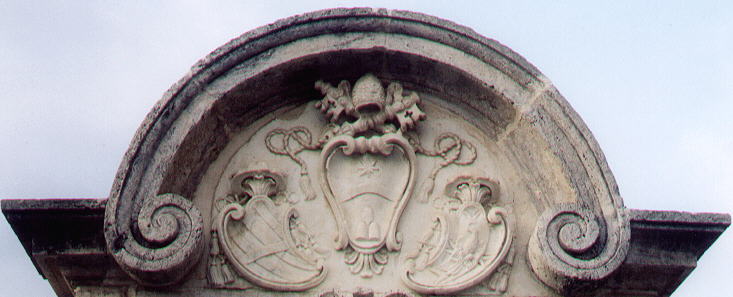 | ||
The oldest fountain was built during the pontificate of Clemens XI (1700-21) and the coat of arms of the pope is accompanied by the coats of arms of Cardinal Lorenzo Corsini (Pope Clemens XII in 1730-40) and Cardinal Lorenzo Imperiali, who came very close to becoming pope in 1730. The coats of arms of the cardinals are twisted to compose a very elegant design.
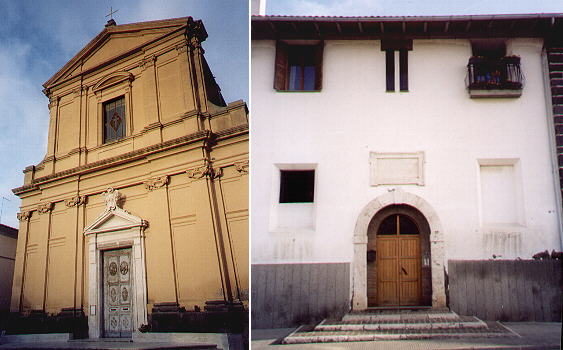 | ||
Other XVIIIth century buildings of Montalto are the main church built under the pontificate of Pius VI (1775-99) and a granary under that of Clemens XIII (1758-69).
Canino
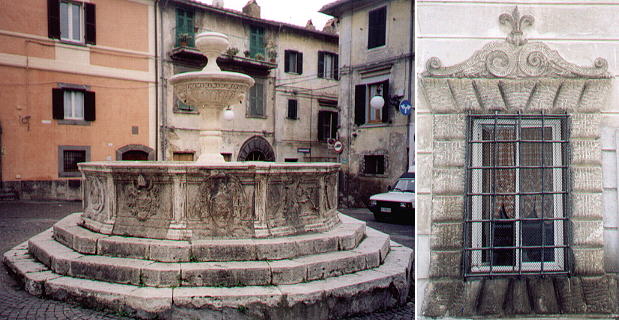 | ||
Canino was the birthplace of Paulus III Farnese (1534-49) and the lilies of the papal coat of arms can still be seen on several building, although the family palace was largely modified when it became the palace of Lucien Bonaparte, brother of Napoleon. Lucien Bonaparte spent most of his life in Canino from which he promoted the excavations of the nearby Etruscan town of Vulci. Pius VII (1800-21) gave him the title of Principe di Canino. The image used as a background for this page shows a Farnese coat of arms in Canino. Il Vignola is thought to have designed the fine Renaissance fountain by which the Farnese embellished the main square of Canino.
In Maremma - other pages:
Corneto (Tarquinia)
some other walks:
Walks with Ferdinand Gregorovius in the Roman countryside
In and about Viterbo
Around Monte Cimino
From Civitavecchia to Civita Castellana
A walk to Porta Furba
Via Appia Antica from Cecilia Metella to Torre in Selci
Via Appia Antica from Torre in Selci to Frattocchie
See my Home Page on Baroque Rome or my Home Page on Rome in the footsteps of an XVIIIth century traveller
All images © 1999 - 2003 by Roberto Piperno. Write to romapip@quipo.it
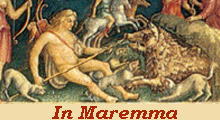 Montalto di Castro and Canino
Montalto di Castro and Canino